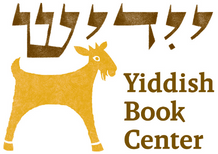Aaron Lansky, Lisa Newman, and Piotr Nazaruk
The Glass Plates of Lublin: Found Photographs of a Lost Jewish World, co-edited by Aaron Lansky, Lisa Newman, and Piotr Nazaruk (White Goat Press and the Grodzka Gate Theatre Centre, Lublin, Poland, 2022)
Every page brims with dignity, struggle, joy, honesty, and presence.
This gorgeous and haunting book contains black and white photographs recovered from glass plate negatives discovered in a pile of rubble in an attic at Rynek 4, Lublin, Poland. The photographs depict scenes of a vibrant Jewish community that was destroyed and irretrievably lost during World War II.
For centuries Lublin was home to one of Europe’s most distinguished Jewish communities. These portraits, which date from around 1913 to the 1930s, showcase the diversity of the city and its Jewish community. In them we see signs of different political parties and members of various social classes; the construction and opening of the Yeshivat Chochmei Lublin, soon to be the largest yeshiva (Talmudic academy) in the world; and groups of left-wing and secular Jewish youngsters, such as members of Bund-affiliated youth groups. The images show the changes in prewar fashions, which reflect increasing Jewish secularization. Many of the pictures were taken in the Saxon Garden, Lublin’s “Central Park,” and in the nearby villages and towns of Nowodwór, Motycz, and Nałęczów, where Lublin residents used to go for vacation.
In the decade since this remarkable find, the collection has been thoroughly researched and analyzed. For years, no connection could be made between any known photographer and the negatives. In 2015, Jakub Chmielewski, then an associate of the Center and currently a researcher at the State Museum at Majdanek, discovered a new clue. In German documents from August 1940, he found an entry on the house at Rynek 4, along with the name “Abram Zylberberg” and the annotation “photographer.” Chmielewski’s discovery was the first, and still the only, serious indication of the negatives’ authorship. The discovery was later confirmed when one of the plates was found bearing the signature “Photo Zylberberg. Lublin.”
What the Critics Say
"The Glass Plates of Lublin is not translated from the Yiddish, but it too represents a sliver of Jewish history salvaged from the destruction of Yiddish culture."—The Detroit Jewish News
"Every page brims with dignity, struggle, joy, honesty, and presence. The Glass Plates of Lublin is a stark and moving reminder that most people live their lives with unspoken desperation and quiet grace — and to bear them witness is a gift."—Julie R. Enszer, Jewish Book Council
About the Editors
Aaron Lansky is the founder and president of the Yiddish Book Center. A native of New Bedford, Massachusetts, he holds a BA in modern Jewish history from Hampshire College, an MA in East European Jewish studies from McGill University, and honorary doctorates from Amherst College, the State University of New York, and Hebrew Union College. Early in his career he was included by Esquire magazine in its first annual register of “The Best of the New Generation: Men and Women Under Forty Who Are Changing America,” and he received a so-called “genius grant” from the MacArthur Foundation in 1989. His bestselling book, Outwitting History: The Amazing Adventures of a Man Who Rescued a Million Yiddish Books, won the Massachusetts Book Award in Nonfiction in 2005.
Piotr Nazaruk is a researcher and a Yiddish enthusiast. At the Brama Grodzka-Teatr NN Centre he conducts research on the Jewish history of Lublin and curates temporary exhibits. He was born in Biala Podlaska and now lives in Lublin.
Lisa Newman is the co-editor of Pakn Treger magazine and director of publishing and public programs at the Yiddish Book Center. She has produced numerous books under the Yiddish Book Center's White Goat Press publishing imprint.
